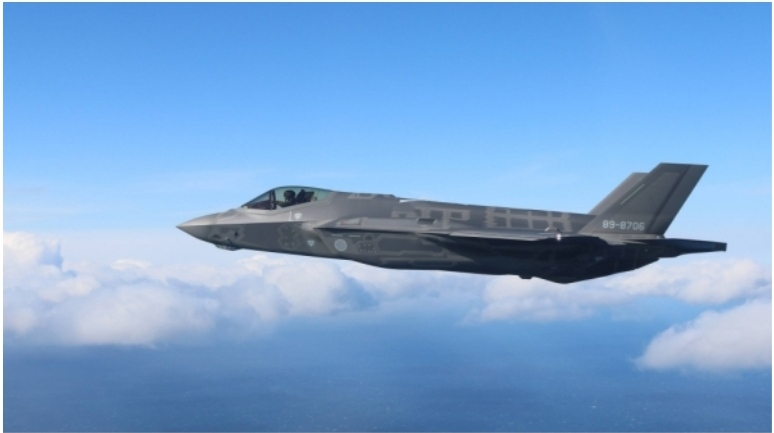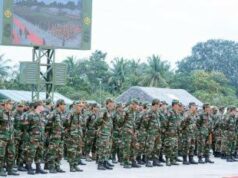Japan F-35 fighters to fly to Australia in first deployment abroad

An Air Self-Defence Force F-35A fighter aircraft
BY Gabriel Dominguez
Defence and security ties between Tokyo and Canberra continue to expand at a rapid pace, with Japan set to send its F-35 fighter aircraft to northern Australia next week on their first-ever overseas deployment.
An Air Self-Defence Force (ASDF) contingent of four F-35As, supported by an aerial tanker, three transport aircraft and about 160 personnel, will take part in a long-range navigation and aerial refuelling training exercise from next Monday through Sept. 2, the ASDF announced earlier this week.
The deployment will see the aircraft fly via Andersen Air Base on the U.S. territory of Guam and then continue to the Royal Australian Air Force’s (RAAF’s) Tindal and Darwin bases in Australia’s Northern Territory.
The training is meant to enhance the ASDF’s deployment capabilities “with a view to future rotational deployment to Australia and overseas joint exercises,” the ASDF said.
The exercises come as Canberra and Tokyo prepare to ramp up the scale and complexity of joint drills and other military cooperation amid concerns about China’s growing assertiveness in the Indo-Pacific.
Australian F-35As will also be deployed to Japan for the first time later this month as part of the bilateral Bushido Guardian aerial exercise, while more than 150 Australian troops will travel to Japan in December for their first-ever full participation in the Yama Sakura command-post exercise alongside U.S. and Japanese forces.
Underpinning the growing bilateral military engagement is the Reciprocal Access Agreement (RAA) — a type of visiting forces pact signed early last year that provides the legal framework for greater cooperation between the Self-Defence Forces and the Australian Defence Force.
The RAA, which only came into effect this month, is expected to streamline more effective force cooperation and enable each country to increase the sophistication and regularity of training, exercises and other activities.
It is also Tokyo’s first accord covering a foreign military presence on its territory since the 1960 Status of Forces Agreement with the U.S. — a move that some view as confirming Australia’s status as Japan’s second most important security partner after the U.S., Japan’s sole treaty ally.
Indeed, the two “special strategic partners” have been getting about as close as they can on security issues. In October, they upgraded their joint security declaration to create a consultation mechanism for responding to “contingencies” — a term often used to describe a conflict over Taiwan.
They have also agreed to enhance cooperation on strategic capabilities, including long-range guided weapons, integrated air and missile defense and undersea warfare, while bolstering trilateral cooperation with the United States. The latter includes increasing training opportunities with U.S. forces in northern Australia, enhancing intelligence, surveillance and reconnaissance cooperation, and engaging in trilateral exercises.
Furthermore, the “semi-allies” have been thinking of other ways to boost coordination and interoperability, which is why Japan is considering sending F-35s and other fighter aircraft on rotational deployments to Australia.
In another example of the expanding defence ties, the Ground Self-Defence Force test-fired its Type-12 anti-ship missile for the first time in Australia last month as part of the multinational Talisman Sabre military exercise. The live-firing was part of joint anti-ship drills presumably held with China in mind, as Japan, the United States and Australia rehearse tactics for keeping opposing naval and amphibious forces at bay in case of a conflict.
The demonstration was just one of several drills Japanese forces were involved in, with GSDF units also participating in amphibious and anti-air exercises.



